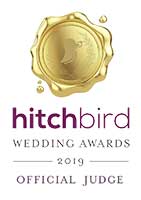Today, I came across an interesting article that defined the difference between fashion, commercial and editorial style photography and I thought, yup, this is worth a little blog post. After all, they are all interrelated but each have a subtle difference from the other.
Of course, there are some obvious things to look at;
Fashion Photography – designed to sell a lifestyle
Editorial Photography – images to sell a story
Commercial Photography – all about selling a product
Fashion Photography Explained;
Ok, so let’s look at fashion first. As I’ve stated above, fashion photography is all about selling a lifestyle and, as a consequence, fashion related product. By creating a certain mood and ambience for the shoot with a loose story that flows through the images, a magazine editor can create interest but without directly focusing on a particular product (see commercial photography). The models will often be styled with dramatic makeup, heavy eyeliners and stunning hair, then dressed in a selection of articles and accessories which will be credited in the shoot.
This type of photography will most often be on location rather than the studio and the photographer must use all of his or her skills to create the correct feel with lighting, reflectors etc. Fashion photographers area as diverse as the human race itself. Some use many complex lighting set-ups, others prefer just one or two lights, where others only work with natural light and reflectors.
Personally, I do not limit myself to any one style, sometimes using multiple lights, other times natural light and reflectors and test other times, a combination of everything!
For me this is probably the most exciting form of my profession.
Example;
Shoot for city girl style clothing company, the (simplified) brief may look like this:-
• Outfit one:- girl hailing and getting into a taxi in the busy city
• Outfit two:- girl having coffee at street cafe with friends
• Outfit three:- girl at her office, perhaps exiting elevator
• Outfit four:- girl relaxing at the pub after work
Editorial Photography Explained;
Editorial photography is really all about selling the magazine and many magazines have their own particular style which the editor will give very specific instructions for the photographer to follow. It stands to reason.
Editorial photography is all about the story. A good example may be for a travel magazine where the editor needs photos to accompany an article about a particular hotel. So for this there may be one or two models involved, several outfits for each models to represent different stage of their stay, perhaps a set of luggage etc. The shoot may entail the following stages to the story;
• The first part of the story may be about the couple checking in at reception or even getting a taxi from the airport.
• Second part could be that they are relaxing in their hotel suite.
• Third could be an excursion or activity.
• Fourth could be dinner.
Ok, so if you look at the above you can see that there will be outfit changes, different locations, different types of lighting and different styling. When done properly and with a good accompanying article, this can be a very powerful tool for a magazine.
Commercial Photography Explained;
Commercial photography is just that, commercial. It’s all about selling a product. Often shot against a plain white studio background, the images will most often go into a company catalogue or online brochure. The lighting must be good so that customers can appreciate the item that they are viewing. If models are involved their makeup and hair must compliment the clothes but not be enough of a feature to detract from the items being sold.
Conclusion;
As a professional photographer you have to understand your camera, how to work with natural and studio lights and how to work with models which means “people skills”. You also need to be able to interpret an editors brief so that the photos you take match his or her expectations. Sometimes the equipment you have won’t be ideal for the job at hand but you need to be able to work out how to achieve what you are being paid for with the tools that you have at hand.
Many different skills are involved to become a professional level photographer!




